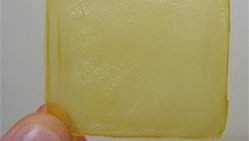Perigos dos defensivos agrícolas
Os defensivos agrícolas precisam ser substituídos por produtos de menor toxicidade.
Além disso, deve-se dar toda a atenção para o perigo do uso de agrotóxicos contrabandeados.
Estes foram os principais alertas feitos por especialistas que participaram de mesa-redonda promovida pela Rádio Nacional de Brasília para debater o uso inadequado de agrotóxicos nas lavouras.
Contaminação dos produtos agrícolas
Os debatedores observaram que é preocupante a contaminação dos produtos agrícolas e de origem animal que pode afetar a saúde humana.
O professor da Universidade Federal do Rio de Janeiro e ex-presidente da Comissão Nacional de Energia Nuclear, José Luiz Santana, ponderou que o uso de defensivos acaba sendo necessário para que a produção agrícola mundial se situe no patamar anual de 2 bilhões de toneladas de grãos.
Por isso, segundo ele, "é preciso que a própria sociedade cobre o emprego correto desses produtos de forma que os efeitos negativos para a saúde do consumidor sejam reduzidos".
Contaminação do leite materno
O médico e doutor em toxicologia da Universidade Federal de Mato Grosso Wanderlei Pignatti afirmou que, em 2009, foram utilizados, no Brasil, 720 milhões de litros de agrotóxicos. Só em Mato Grosso, foram consumidos 105 mil litros do produto.
Ele indaga "onde vai parar todo esse volume" e defende a reciclagem das embalagens vazias a fim de não contaminarem o meio ambiente. A chuva e os ventos favorecem a contaminação dos lençóis freáticos.
Entre os defensivos agrícolas mais perigosos, ele cita os clorados, que estão proibidos em todo o mundo e ainda são utilizados largamente no Brasil. São defensivos que causam problemas hormonais e que podem afetar a formação de fetos, segundo o médico.
O professor relatou que, nos locais onde o uso de agrotóxicos não é feito com critério, encontram-se casos de contaminação do próprio leite materno, "o alimento mais puro que existe", o que ocorre pela ingestão do leite de vaca. "A mulher vai ter todo o seu organismo afetado quando o seu leite não estiver puro e os efeitos tóxicos podem ficar armazenados nas camadas de gordura do corpo".
Ele lembrou ainda que há uma resolução do Ministério da Agricultura que proíbe a pulverização de agrotóxicos num raio de 500 metros onde haja habitação e instalações para abrigar animais, distância que tem que ser observada também em relação às nascentes.
Alertas e alarmes
O professor Mauro Banderali, especialista em instrumentação ambiental na área de aterros sanitários, reconhece que, apesar da cultura de separação do lixo tóxico em aterros que há existe no país, ainda não se sabe exatamente o potencial dos agrotóxicos para contaminar o solo e a água e, consequentemente, os seres humanos pelo consumo de alimentos cultivados em áreas pulverizadas.
"A preparação do campo para o plantio é, frequentemente, feita sem se saber se vai vir chuva. Quando o tempo traz surpresas, ocorre a contaminação das nascentes em lugares onde a aplicação foi demasiada," disse Banderali.
O professor José Luiz Santana ressalva que existem propriedades muito bem administradas onde há a preocupação de manter práticas sustentáveis. Mas ele denunciou que há agricultores que usam marcas tidas como ultrapassadas na área dos químicos e que podem ser substituídas por alternativas de produtos mais evoluídos, disponíveis no mercado.
Para ele, apesar da seriedade do assunto, "não se deve assustar as pessoas quanto ao consumo de alimentos", já que as áreas do governo que cuidam do tema têm o dever de trabalhar pelo bom uso dos agrotóxicos e, além disso, conforme ressaltou, a agricultura conta com um "trabalho de apoio importante por parte de organizações não-governamentais que procuram difundir o uso correto dos defensivos agrícolas.



